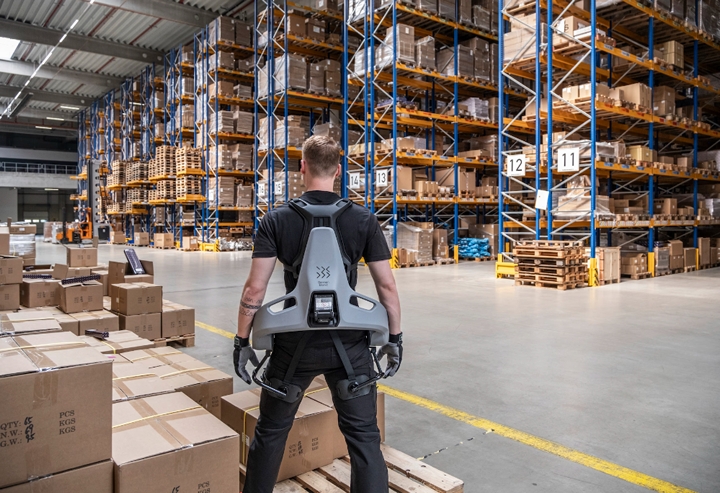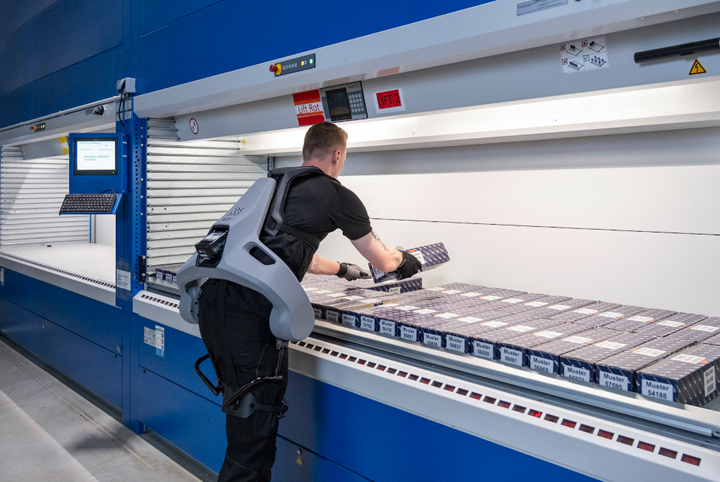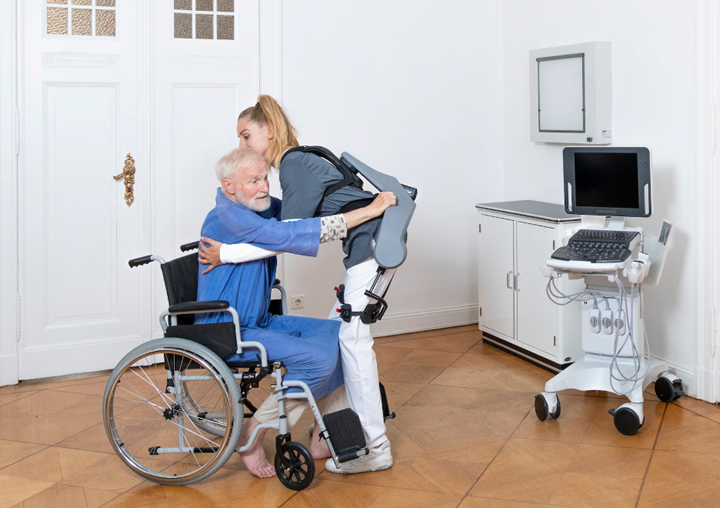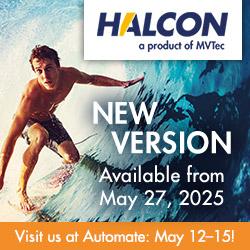Through onboard intelligence and cloud connectivity, Exia delivers personalized support, injury prevention, and ergonomic optimization - essentially becoming a smart, adaptive partner for physical work.
 Wearable Robotics and Exoskeleton Technology
Wearable Robotics and Exoskeleton Technology

Q&A with Josh Steinmann, VP of AI and Robotics | KULR
Tell us about yourself and your role with KULR.
 I’ve always been excited about driving the adoption of technology throughout my career, beginning with product management and business development roles at Qualcomm (wireless telecommunications) followed by leading global business development for Better Place, an EV infrastructure startup founded in the early days of EV adoption. Later, I was an early employee at Helium, an IoT startup with an emphasis on edge compute. Most recently, I was Chief Commercial Officer at an AI startup, Stella.ai, where we built and deployed AI solutions to mediate a talent marketplace for the Fortune 500. The opportunity with physical AI is massive and KULR Technology is positioned to participate in this growth area. I couldn’t be more excited about the potential of deploying AI to the edge to enhance our everyday work.
I’ve always been excited about driving the adoption of technology throughout my career, beginning with product management and business development roles at Qualcomm (wireless telecommunications) followed by leading global business development for Better Place, an EV infrastructure startup founded in the early days of EV adoption. Later, I was an early employee at Helium, an IoT startup with an emphasis on edge compute. Most recently, I was Chief Commercial Officer at an AI startup, Stella.ai, where we built and deployed AI solutions to mediate a talent marketplace for the Fortune 500. The opportunity with physical AI is massive and KULR Technology is positioned to participate in this growth area. I couldn’t be more excited about the potential of deploying AI to the edge to enhance our everyday work.
Can you tell us about KULR’s recent partnership with German Bionic?
German Bionic and KULR’s partnership represents a shared vision of a physical AI enhanced workplace where technology augments human output. The partnership encompasses a deep technology cooperation as well as an exclusive commercial representation in North America. Through seven generations of exoskeletons, German Bionic has developed a best-in-class product highly optimized for industrial workplaces. The latest power suit—Exia—is lighter, more powerful, and cost optimized for a compelling ROI.

How is AI being used in German Bionic’s exoskeleton technology?
The new Exia exoskeleton is the first wearable robot powered end-to-end by augmented AI. It uses billions of real-world motion data points collected across industries to understand how people actually work — lifting, bending, walking, and carrying. This data fuels an AI-native architecture that enables Exia to continuously learn from its user’s movements and environment. As a result, it doesn’t just respond; it anticipates needs, adjusts in real time, and grows more effective over time. Through onboard intelligence and cloud connectivity, Exia delivers personalized support, injury prevention, and ergonomic optimization – essentially becoming a smart, adaptive partner for physical work.
How big is the market for wearable robotics, and where does KULR see the biggest opportunity?
The global wearable robotic exoskeleton market size was valued at USD 1.76 billion in 2024. The market is projected to grow from USD 2.49 billion in 2025 to USD 30.56 billion by 2032, exhibiting a CAGR of 43.1% during the forecast period. North America dominated the global market with a share of 38.64% in 2024 and it continues to be a significate area for opportunity.

How do AI and robotics fit into KULR’s broader growth strategy?
KULR’s origin of developing highly specialized energy systems for aerospace and defense tech positioned us ideally to participate in the growing physical AI ecosystem. AI enabled solutions for the enterprise are in the early stages of revolutionizing work as we know it. KULR’s partnership with German Bionic brings a cutting-edge physical AI solution to industrial facilities worldwide.
How can KULR’s technology help address the labor shortage problem?
The Exia power suit tackles the labor shortage from both sides: retention and recruitment. By dramatically reducing the risk of musculoskeletal injuries – which cost U.S. employers over $67,000 per claim on average – and making physically demanding jobs safer and less exhausting, Exia helps extend career longevity and keep skilled workers healthy. At the same time, it makes strenuous jobs more attractive to a new generation of workers by integrating cutting-edge technology, AI, and gamified coaching into traditional manual roles. In a climate where the U.S. is projected to be short nearly two million manufacturing workers by 2033, solutions like Exia are essential for building a safer, more sustainable workforce.
Josh Steinmann has been building and scaling teams in technology throughout his career within Telecommunications, Cleantech, IoT, and HR Tech. Earlier in his career, Steinmann spent eight years at Qualcomm designing and building CDMA mobile devices as well as serving as an Expat in Southeast Asia contributing to the growth of CDMA in a number of emerging markets. Steinmann also was an early employee at Khosla Ventures backed IoT company, Helium, which developed a novel air interface and edge compute model for power and bandwidth constrained devices.
Most recently, after serving as Chief Commercial Officer at Stella.ai, Steinmann was SVP of Client Services at Trustaff followed by a leadership role within the Office of Innovation at Ingenovis Health. Steinmann earned a Masters Degree in Management from Stanford’s Graduate School of Business and earned a Bachelor’s of Science in Electrical and Computer Engineering from the University of California, Santa Barbara.
The content & opinions in this article are the author’s and do not necessarily represent the views of RoboticsTomorrow
Featured Product

